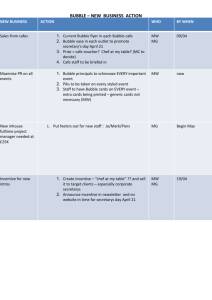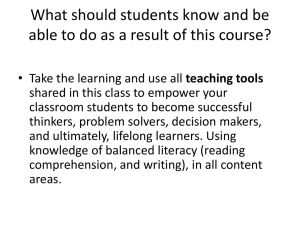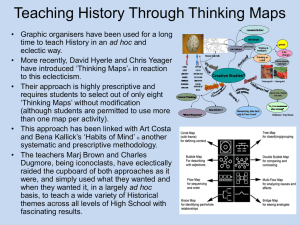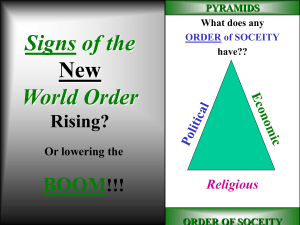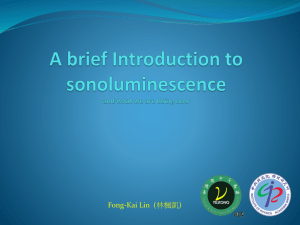Kakau Mea Nui (Writing Matters) Project
advertisement
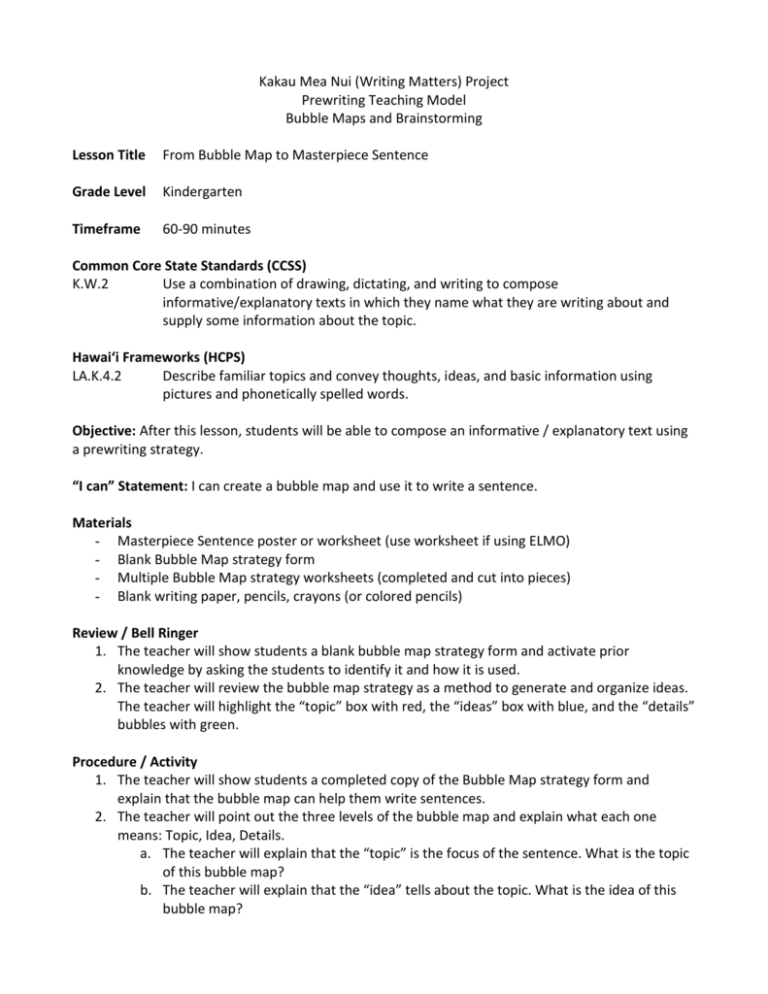
Kakau Mea Nui (Writing Matters) Project Prewriting Teaching Model Bubble Maps and Brainstorming Lesson Title From Bubble Map to Masterpiece Sentence Grade Level Kindergarten Timeframe 60-90 minutes Common Core State Standards (CCSS) K.W.2 Use a combination of drawing, dictating, and writing to compose informative/explanatory texts in which they name what they are writing about and supply some information about the topic. Hawai‘i Frameworks (HCPS) LA.K.4.2 Describe familiar topics and convey thoughts, ideas, and basic information using pictures and phonetically spelled words. Objective: After this lesson, students will be able to compose an informative / explanatory text using a prewriting strategy. “I can” Statement: I can create a bubble map and use it to write a sentence. Materials - Masterpiece Sentence poster or worksheet (use worksheet if using ELMO) - Blank Bubble Map strategy form - Multiple Bubble Map strategy worksheets (completed and cut into pieces) - Blank writing paper, pencils, crayons (or colored pencils) Review / Bell Ringer 1. The teacher will show students a blank bubble map strategy form and activate prior knowledge by asking the students to identify it and how it is used. 2. The teacher will review the bubble map strategy as a method to generate and organize ideas. The teacher will highlight the “topic” box with red, the “ideas” box with blue, and the “details” bubbles with green. Procedure / Activity 1. The teacher will show students a completed copy of the Bubble Map strategy form and explain that the bubble map can help them write sentences. 2. The teacher will point out the three levels of the bubble map and explain what each one means: Topic, Idea, Details. a. The teacher will explain that the “topic” is the focus of the sentence. What is the topic of this bubble map? b. The teacher will explain that the “idea” tells about the topic. What is the idea of this bubble map? 3. 4. 5. 6. 7. 8. 9. c. The teacher will explain that the “details” tell about the ideas. What do the details tell us about the idea? d. What do we think this sentence might be about? The teacher will say, “We have a bubble map, and we know what it’s telling us about. Let’s see if we can write a sentence using this bubble map.” The teacher will show students the Masterpiece Sentence poster and ask them if they notice anything strange about the sentence on it. Student responses will vary, but students should notice that the sentence is missing a few parts. The teacher will use a cut-up copy of a bubble map to show students how the ideas and details can fit into the sentence. She will read the sentence aloud and then ask for a student volunteer to read the sentence aloud. The teacher will engage students in a sentence building activity. Using a previously completed bubble map that answers the questions, she will ask student volunteers to help her fill in the blanks to her sentences. a. The teacher will have a sentence prompt poster or worksheet (if projecting with ELMO) with blue squares and green circles and several copies of a cut-up bubble map available. b. The teacher will ask student volunteers to choose one of the blue squares or one of the green circles from a draw pile and match it to a blue square or green circle on the poster. Students will take turns until all of the squares and circles are filled in on one sentence. The teacher will ask for a volunteer to read the sentence out loud. The teacher may choose to repeat the activity three to five times with different sentence structures or different bubble maps until every student has a chance to participate. The teacher will point out the topic, ideas, and details after each sentence is created and ask students to read the sentence aloud. The teacher may leave one of the sentences available for students and allow them to copy it onto their own paper. Students can then illustrate the sentence. Students who finish early may choose to color their pictures. Extension 1. The teacher will review the bubble map strategy and the sentence building strategy. 2. The teacher will provide a completed bubble map strategy form for students and ask them to use scissors to cut out the pieces. 3. After students finish cutting out the pieces of the bubble map, the teacher will provide students with the Masterpiece Sentences handout. 4. Students will glue the pieces into the corresponding shapes on the Masterpiece Sentence handout. At the bottom of the page in the space provided, students will copy the sentence, practicing capitalization and punctuation conventions. Differentiation 1. The teacher may choose to divide students into teams when completing the Masterpiece Sentences guided activity. 2. For students who need more support, provide a completed bubble map strategy form for them to use for the activity. 3. For students who need more of a challenge, provide a partially completed bubble map strategy form for them to use for the activity.


